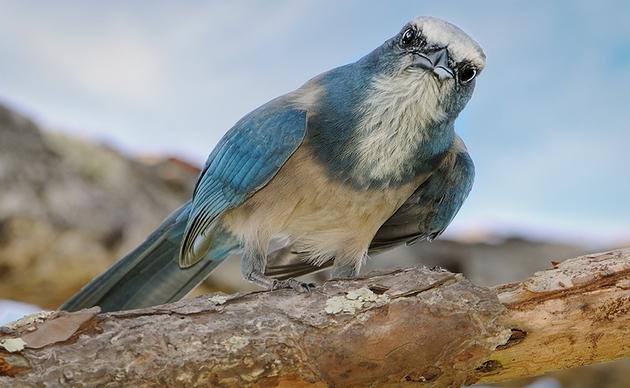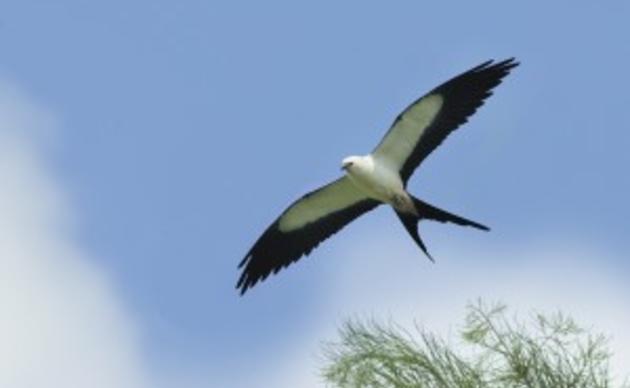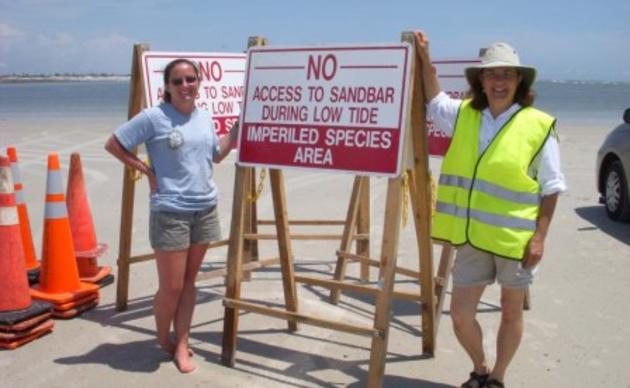Florida is an important stopover site for millions of migratory songbirds on their biannual migration route along the Atlantic flyway. The peninsula and its barrier islands stretch far into the Gulf and the Caribbean, allowing birds to make the jump across large stretches of water. Florida Gulf Coast University (FGCU) is one of many key “hotspots” for migratory songbirds along the southwest coast. The campus sits on 400 acres of preserved land, where they refuel and rest before continuing their journeys. However, on campus and beyond, windows are posing a threat to migrating birds traveling through Florida.
According to the U.S. Fish and Wildlife Service, an estimated 1 billion birds die each year in the U.S. from collisions with windows. Birds are unable to recognize glass as a barrier that they cannot fly through. Reflections of vegetation, sky, or otherwise somewhere they want to cause them to try to fly through the glass, sometimes at full speed. This is often fatal.
Many buildings on the FGCU campus, particularly those featuring window-heavy designs, are especially dangerous to birds. Audubon of Southwest Florida, the local chapter, has been surveying the campus core for bird strikes for several years. “Our chapter designed a bird-window collision curriculum for Service Learning students. The 10-hour project involved the basics of the glass hazard and taught skills in monitoring campus buildings and reporting the data,” says Chapter President Gerri Reaves.
FGCU Art Major student Soph Shikes was walking to their class in the Arts Complex one day when they found a Gray Catbird that perished after striking the front windows of the building. Troubled by the thought that events would repeat themselves, Soph asked the FGCU Ornithology Club if anything could be done to prevent further bird strikes on campus. A collaborative effort between the Club, FGCU Art Galleries, and assistant professor of ornithology at FGCU, Oscar Johnson, PhD, was born.
The Club and Galleries called for student volunteers to design and execute a project that fused art and science to prevent further bird strikes on the Arts Complex building. The result was a team of students from many different academic disciplines, all wishing to do their part in preventing bird strikes on campus.
The student team researched and designed a beautiful, cost-effective solution: Grease pencils used to draw a scene inspired by wild Florida, accompanied by 2-inch spaced dots to break up the window reflections and prevent collisions.
The student artists created digital line art featuring many of Florida’s native plants and bird species, all of which can be found on the FGCU campus. The scene even features a Gray Catbird, the bird that started it all. Then, they printed their art on a large-scale printer, situating each piece onto the interior of the glass. From the outside, student volunteers traced the art with the pencils. Other volunteers used stencils to fill in the 2-inch spaced dots necessary to break up the reflection.
Once complete, the Art Galleries hosted a ribbon-cutting ceremony, where students, staff, and faculty came to see the unveiling of the student-led collaborative project. Representatives from Audubon of Southwest Florida and Peace River Audubon Society attended the event in support.
“There have been reports of campus bird fatalities for years, including from two of our board members who were also faculty. This admirable collaboration among students and Dr. Johnson will actually save birds—and it has energized collision mitigation on campus,” Reaves notes.
The FGCU Ornithology Club and Dr. Johnson are planning on expanding to more buildings on campus, as well as working with campus administrators to implement bird-safe design in future buildings as the campus grows. Dr. Johnson’s lab is currently running a long-term study to identify which buildings and windows impact birds the most.
This project exemplifies the power that each and every one of us has to protect the birds we love so dearly. Grease pencils and stencils are a cost-effective way to prevent birds from striking your home or office, among many other ways to make your windows safe for birds!

Since graduating from FGCU in Fall of 2024, Edwin has been working on habitat restoration for the City of Green Bay, WI in the Conservation Corps.




